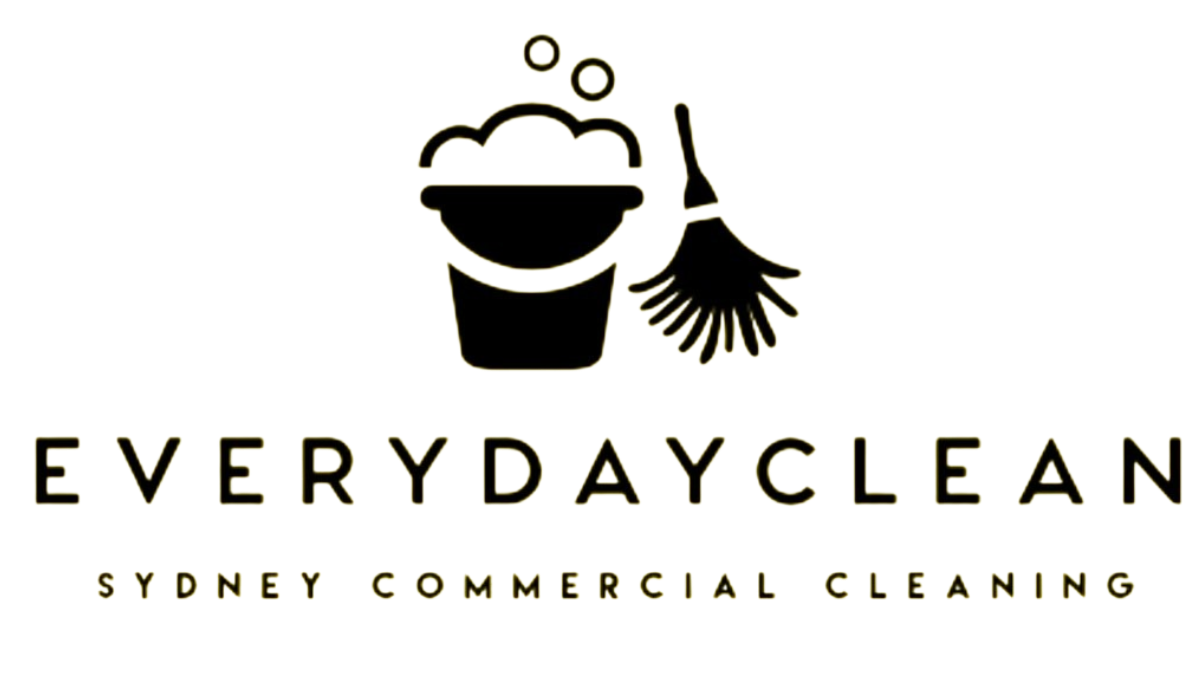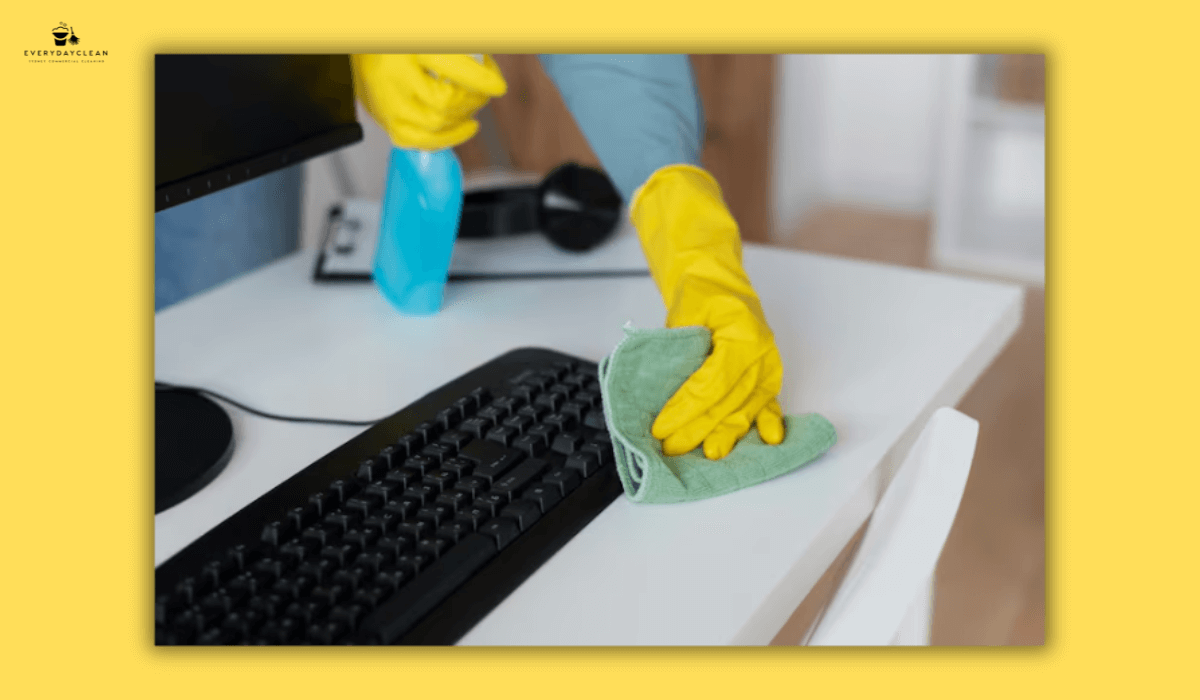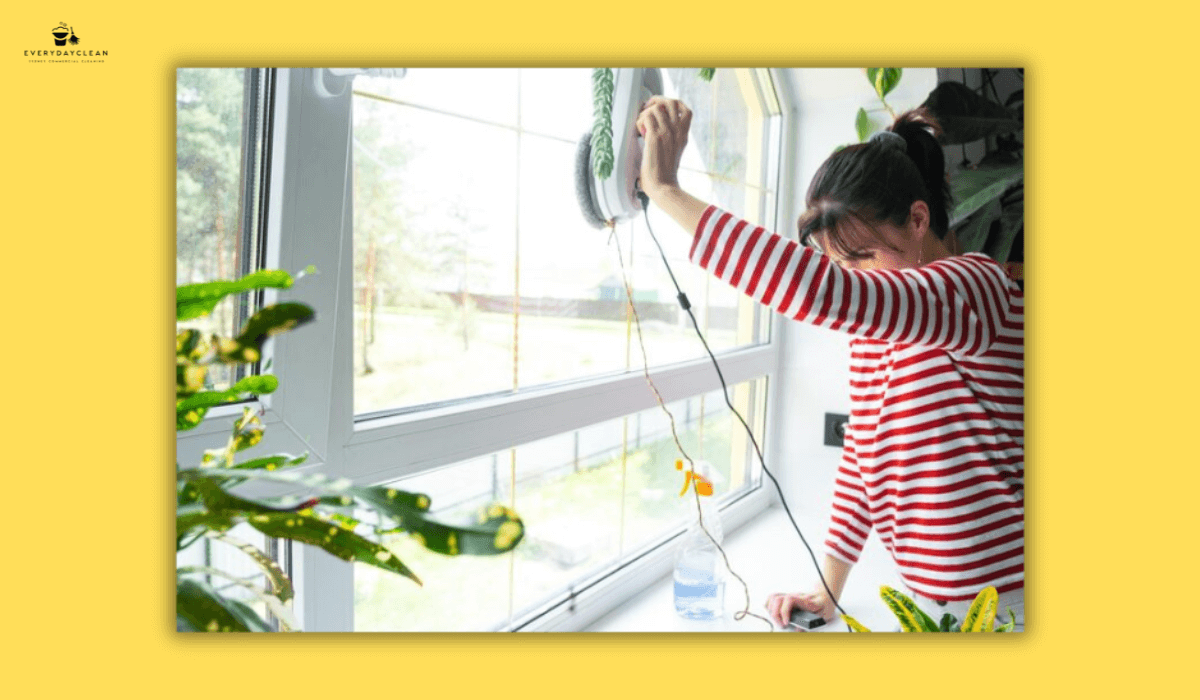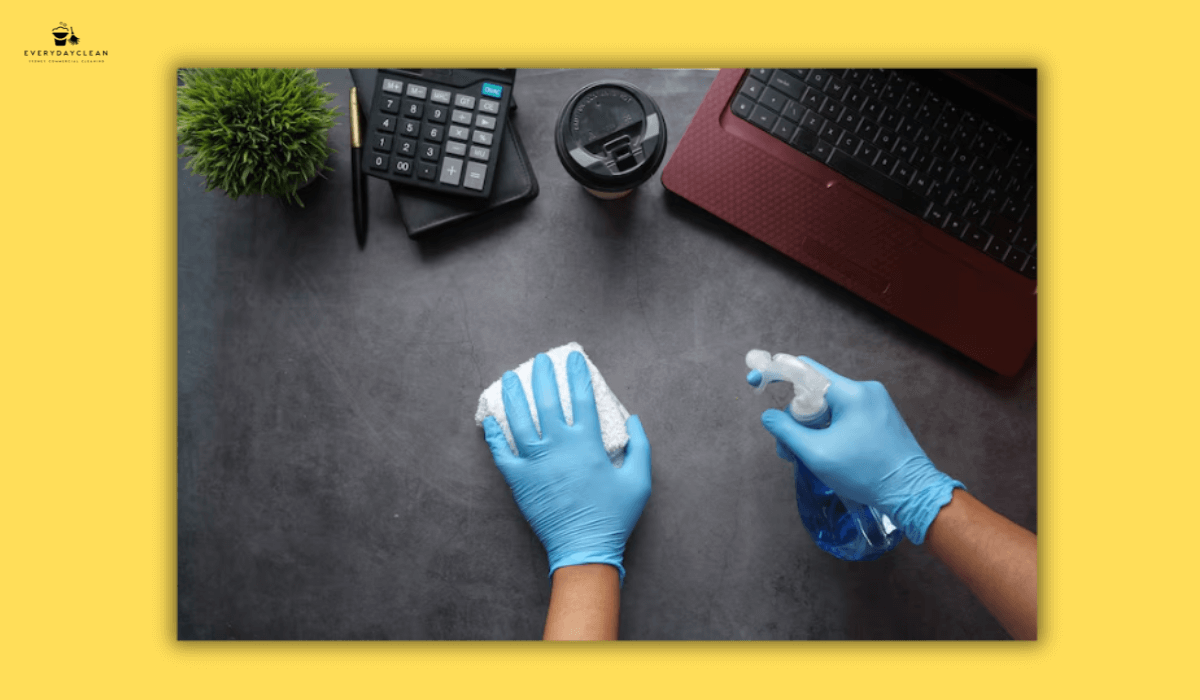7 Steps to a School Cleaning Schedule
A school cleaning schedule outlines how often each area of a school should be cleaned — from daily classroom sanitation to monthly deep-cleaning of carpets, windows, and HVAC systems. It ensures that every part of the facility, including restrooms, cafeterias, and hallways, remains hygienic, safe, and ready for students. The most effective schedules organise cleaning by frequency or by zone, helping custodial teams maintain consistency and compliance with health standards. This practical guide explains each step to building a complete school cleaning schedule and provides a checklist schools can follow to ensure no task is missed.
Step 1: Audit the School and Identify Cleaning Needs
The foundation of any effective school cleaning schedule begins with a comprehensive facility audit. Start by listing all zones within the school — classrooms, restrooms, cafeterias, gyms, corridors, libraries, science labs, and administrative offices.
Each area requires a different cleaning approach based on its function and level of traffic. For example, classrooms need daily surface disinfection, while storage rooms may only need monthly dusting. During this stage, note down:
- The type of flooring and surfaces (vinyl, carpet, tile, stainless steel, etc.)
- High-touch points like doorknobs, desks, and light switches
- Cleaning tools and chemicals are currently used
This audit creates a clear understanding of what needs to be cleaned, how often, and with which resources — providing the groundwork for an effective schedule.
Step 2: Define Cleaning Frequency and Assign Responsibilities
Once every task and area is identified, determine how often each should be cleaned and who will perform the task. A clear division of duties ensures accountability and consistency.
For instance, restrooms require multiple cleanings per day, while gym floors may need disinfection after every sports session. Custodial staff, teachers, and even students (for simple tidying) can all have defined responsibilities.
Common frequency categories include:
- Daily: Classrooms, corridors, canteens, and restrooms
- Weekly: Windows, vents, and storage areas
- Monthly: Furniture polishing and equipment checks
- Seasonal/Term Break: Deep cleaning, carpet shampooing, and floor restoration
Clearly outlining roles and frequencies prevents overlap and ensures no area is neglected. These principles also apply in early education centres, where our
child care cleaning services help maintain consistent hygiene in high-risk environments.
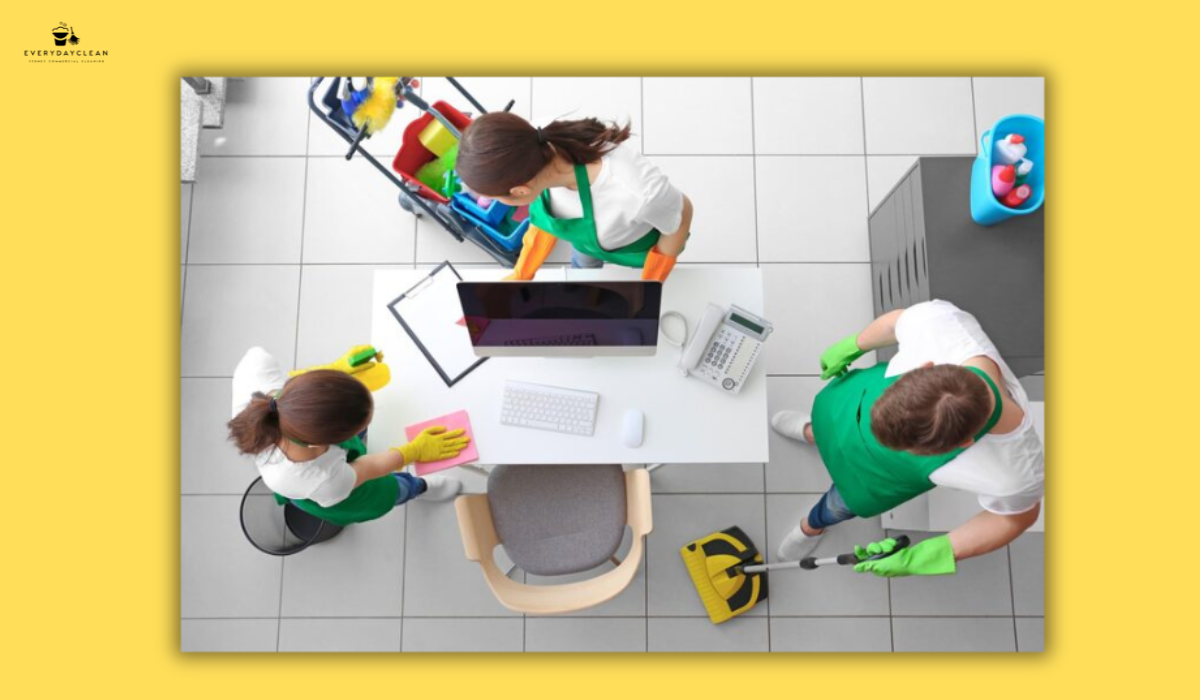
Step 3: Create a School Cleaning Schedule Checklist
Before displaying the checklist, it’s essential to understand its purpose: a cleaning schedule checklist acts as a visual map for daily and periodic cleaning routines. It standardises workflows, saves time, and ensures all hygiene tasks are completed on time.
Below is an example of a school cleaning schedule checklist that can be adapted to any facility size:
| Area | Frequency | Main Tasks | Responsible Team |
|---|---|---|---|
| Classrooms | Daily | Wipe desks, disinfect surfaces, empty bins, sweep/mop floors | Custodial staff + teachers |
| Restrooms | 2–3 times daily | Clean toilets, disinfect sinks, restock supplies | Custodial staff |
| Hallways & Entrances | Daily | Mop floors, wipe railings, clean glass doors | Custodial staff |
| Gymnasiums | Daily / Weekly | Mop floors, disinfect sports equipment, and clean mats | Custodial staff |
| Cafeteria | Daily | Sanitize tables, clean serving counters, and mop floors | Custodial staff |
| Offices & Staff Rooms | Weekly | Dust furniture, vacuum carpets, disinfect phones | Cleaning staff |
| Playgrounds | Monthly | Pressure clean, inspect bins and play equipment | Maintenance crew |
Every task should be logged and ticked off to maintain accountability and quality assurance.
Step 4: Choose the Right Cleaning Products and Tools
Transitioning smoothly, selecting the right cleaning agents and equipment directly influences the success of the schedule. The products chosen must be safe, effective, and compliant with school health regulations.
Use eco-friendly cleaning products whenever possible — they protect students from exposure to harsh chemicals and support sustainability goals. For guidance on product selection, see our full article on eco-friendly cleaning products for schools.
- Neutral-pH cleaners for general surfaces and floors
- Disinfectants approved for school environments (hydrogen peroxide or alcohol-based)
- Microfibre cloths and mop heads for superior dust and bacteria capture
- HEPA-filtered vacuums for classrooms and libraries
Label storage areas, follow proper dilution ratios, and maintain Safety Data Sheets (SDS) for all chemicals used. Proper product selection reduces waste, extends surface lifespan, and promotes healthier indoor air.
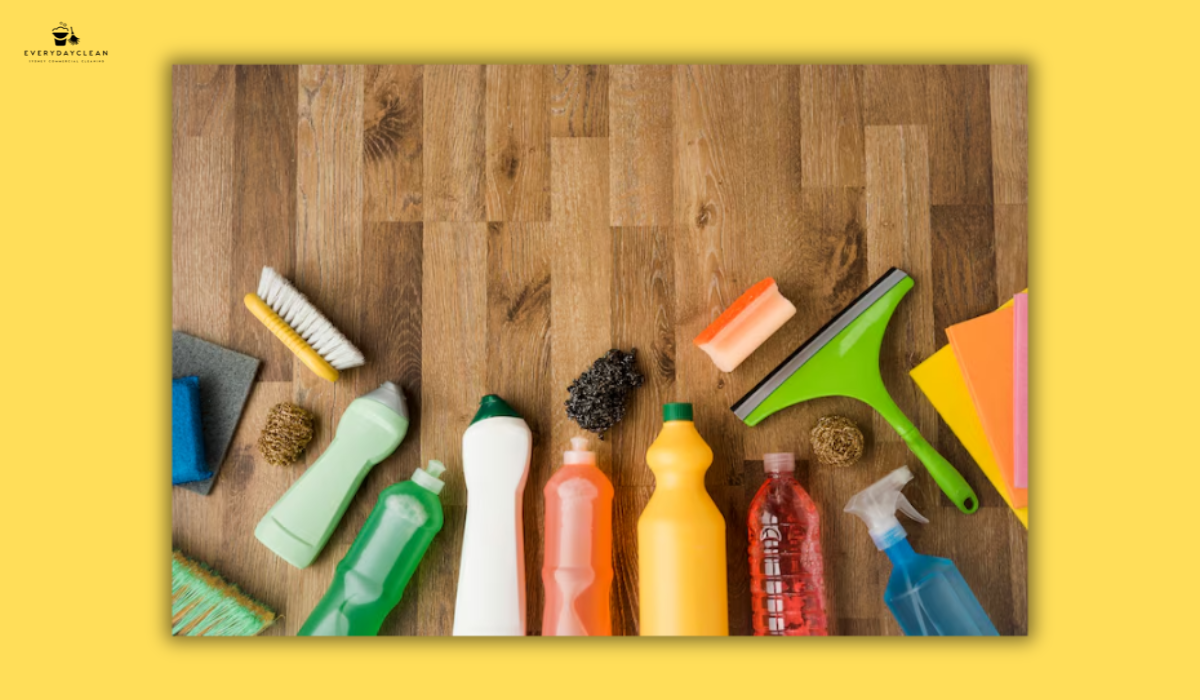
Step 5: Train Cleaning Staff and Communicate Clearly
Even a well-designed schedule fails without trained personnel. Effective implementation requires that every staff member understands the how and why behind each task.
Provide formal training on cleaning techniques, equipment handling, and chemical safety. Custodians should know correct contact times for disinfectants, while teachers should understand daily tidying protocols to maintain hygiene between cleans.
Regular communication with faculty and parents reinforces transparency and builds trust. Sharing a simplified version of the cleaning schedule — via posters or newsletters — helps the school community recognise the shared responsibility of maintaining a clean, safe environment.
Step 6: Monitor, Record, and Adjust Regularly
An effective cleaning schedule isn’t static; it evolves as school needs change. Regular monitoring ensures the plan remains efficient and responsive to real-world demands.
Implement a record-keeping system to track completed tasks, identify gaps, and log issues (such as recurring odours or high absenteeism linked to hygiene). Supervisors should conduct weekly or monthly inspections to verify performance.
Adjust frequencies based on observed results. For example, during flu season, increase classroom disinfection frequency. In low-use periods, scale back non-essential tasks to save resources without compromising hygiene standards.
Step 7: Plan for Deep Cleaning and Seasonal Maintenance
Routine cleaning forms the foundation, but deep cleaning ensures long-term facility hygiene. Schools should allocate time during term breaks or holidays for intensive cleaning tasks that go beyond the daily checklist.
Typical deep-cleaning activities include:
- Carpet shampooing and stain removal
- Machine scrubbing and resealing floors
- Ceiling and vent dusting
- Descaling restroom fixtures
- Power washing playgrounds and exterior areas
Scheduling these in advance keeps schools compliant with safety standards and ensures the environment is spotless before each new term.
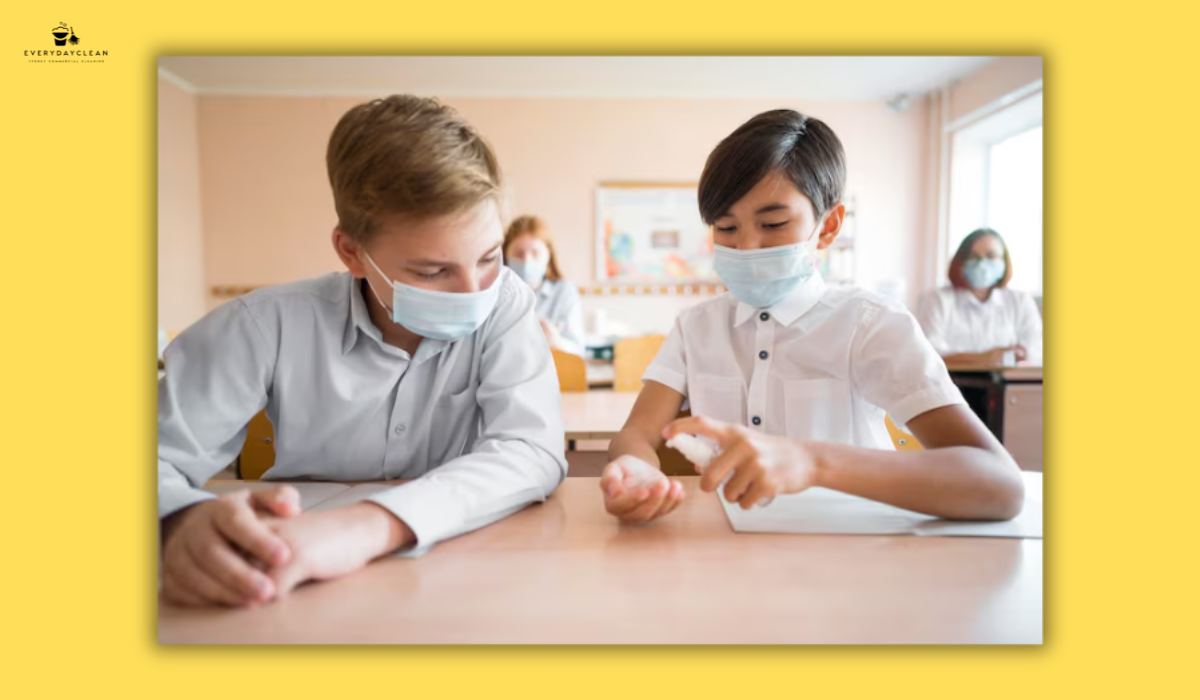
FAQs About School Cleaning Schedules
Creating a school cleaning schedule often raises questions about timing, hygiene priorities, and best practices. Below are detailed answers to the most common questions facility managers and educators ask.
How often should restrooms be cleaned in schools?
Restrooms should be cleaned multiple times daily, particularly in larger campuses or during high-traffic hours. This includes disinfecting toilets and sinks, replenishing soap and paper supplies, and wiping high-touch areas like taps and door handles. Weekly deep cleaning should address drains, partitions, and tiled surfaces. Frequent restroom maintenance prevents odour buildup and maintains public confidence in hygiene standards.
What’s the difference between cleaning, sanitising, and disinfecting?
Cleaning removes visible dirt and debris, sanitizing reduces germs to safe levels, and disinfecting kills harmful pathogens. In a school cleaning schedule, these processes should be layered: clean first to remove grime, then sanitise or disinfect high-touch surfaces like desks and door handles. Understanding this difference ensures cleaning staff use the right products and methods for each task.
How can schools communicate cleaning schedules effectively?
Transparency builds trust. Schools can post simplified cleaning timetables in staff rooms or hallways, publish summaries in parent newsletters, or include updates in health communications. When stakeholders understand that cleaning is systematic and verified, it reinforces community confidence in school hygiene practices.
Final Thoughts
A well-structured school cleaning schedule protects student health, extends facility lifespan, and ensures compliance with hygiene standards. By following this seven-step checklist — from auditing spaces to conducting deep cleans — schools can create a cleaning routine that’s consistent, cost-effective, and ready for public inspection.
Regular monitoring, eco-friendly product use, and clear communication turn cleaning from a routine task into an integral part of school safety and well-being.
Ready to maintain spotless learning spaces? Contact Everyday Clean for professional school cleaning services tailored to your facility.
Author: Everyday Clean Content Team
Everyday Clean is Sydney’s trusted provider of commercial cleaning solutions, including schools, offices, gyms, and childcare centres. Our licensed professionals use advanced, eco-friendly equipment to deliver safe, compliant, and spotless results across all facilities. With deep experience in the education sector, we help schools maintain hygienic, student-ready environments that staff and families trust.
